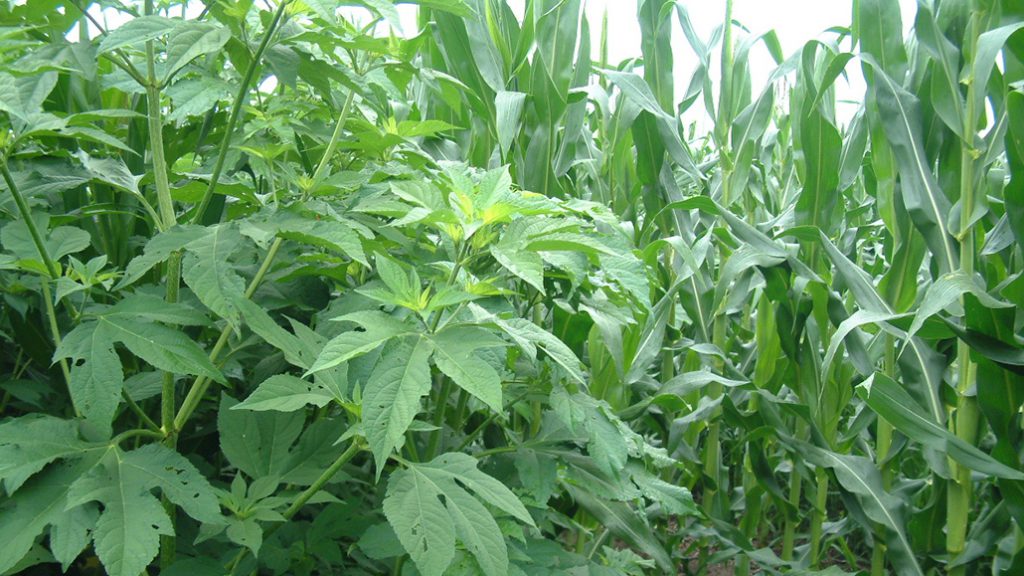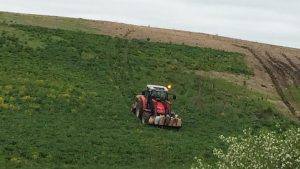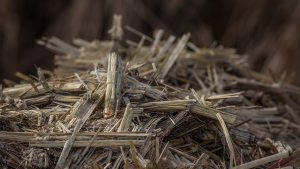Herbicide resistance
CHANGING CHEMISTRY FOR A CHANGING ENVIRONMENT

GLYPHOSATE HAS TRANSFORMED the agricultural industry allowing farmers to use a simple and effective tool to reduce weed pressure in their fields. As a result of this transformation, there is a generation of farmers who have relied on glyphosate when it comes to controlling weeds on the farm. Undeniably, glyphosate has continued to be an effective tool to control weeds, but herbicide resistance is increasingly becoming an issue.
PREDICTING HERBICIDE RESISTANCE
Over the last two decades, scientists have been working to better understand, track, and even predict the next instance of herbicide resistant weeds that impact agriculture. Dr. François Tardif, professor in weed science at the University of Guelph, has been actively working to better understand the biology, biochemistry, genetics, and physiology of weeds along with their management using herbicides and other means.
Tardif says his research has shown that the scientific community has had a difficult time when it comes to predicting what the next herbicide resistant weed is going to be. Canada Fleabane started developing herbicide resistance in the United States in 1999. Since then, scientists in Ontario have looked for herbicide resistant fleabane through testing every year. Tardif notes herbicide resistant fleabane was first documented in Ontario in 2010. But while scientists were actively looking for cases of resistant fleabane, giant ragweed was actually the first to develop herbicide resistance in Ontario.
Tardif says this was rather surprising, “at the time, if you had surveyed all the weed scientists in the province very few would have thought giant ragweed would have been the first weed in Ontario to develop glyphosate resistance. Others came to mind like lambs quarters, pigweed, or foxtail, and fleabane. But few would have thought giant ragweed.”
There are general species of weeds that scientists suspect are more at risk, but, as Tardif states, we can’t really predict which is going to be the next one. Regardless, we know that there are going to be other species of weeds that have resistance and we (farmers and the broader agriculture industry) will need to adapt accordingly.
PROBLEM AREAS
Some farmers can experience issues controlling weeds within certain fields or areas within fields. Tardif says he has heard from farmers who have experienced persistent weed problems within fields. Year after year these weed problem areas increase and eventually affect the entire field. These persistent weed pressures should not be ignored and leaving them can create further problems.
“If you have any doubts with weed pressure and herbicide resistance, the field history is important,” says Tardif.
A small patch of persistent weeds may seem insignificant, but that may be just the beginning. Keeping a record of your field history and identifying particular problem spots within your records will help identify weed management problems. Through better identification you can manage weeds and selectively tailor different herbicide chemistries to those particular problem spots.
PREVENTION
When a farmer is dealing with weed infestations, the primary objective is to eliminate the weed pressure in the most efficient and effective way possible. Unless you have a resistant weed issue on farm, preventing herbicide resistance may not necessarily be a priority when using a herbicide. But despite this, Tardif states there are agronomic practices a farmer should already be doing that will help when preventing resistance, “if you use proper crop rotation, diverse herbicide chemistry rotation, scouting, and remedial measures, herbicide resistance shouldn’t really happen.”
All of these agronomic practices can play a role in eliminating weeds while also reducing the risk of developing herbicide resistance.
Crop rotation is widely talked about in the area of soil health, but crop rotation is another strategy when reducing weed pressure and working to prevent herbicide resistance. In systems where continuous corn or soybeans are planted, specific weed types can thrive and become very difficult to control. Planting crops in rotation such as corn, soybeans, and wheat can reduce the likelihood that specific weed species will adapt and cause increased weed pressure issues.
Furthermore, proper herbicide chemistry rotation is also another important tactic when reducing weed pressure. Tardif explains that rotating and mixing herbicides can help increase weed control effectiveness while minimizing resistance issues. There are alternative herbicide products that, when used in rotation, can provide farmers with different modes of action to control weeds. The ultimate goal is to confuse the weeds. Similar to a pitcher in baseball, you are never going to pitch the exact same pitch over and over; eventually the hitter will recognize this, take advantage of it and hit a homerun. In terms of weed management, Tardif notes “we never want to come back with the same thing repeatedly. Whether it is herbicide selection, tillage, or even crop planted we ultimately want to continually diversify practices and confuse the weeds.” Confusing the weeds with different modes of action is the primary goal which will benefit your weed management, while also working to prevent herbicide resistance.
Our natural environment is constantly changing and weed management is becoming an increasingly important crop management issue. Herbicide resistance is becoming, and will continue to be, a factor in the way farmers manage weeds. At the end of the day, there are multiple tools in the tool box when it comes to managing weeds. Using a full system approach to weed management including crop rotation, herbicide rotation, and even cover crops will ensure effective strategy to manage your weed pressures on the farm. This spring, talk to your local agricultural retailer or Certified Crop Advisor (CCA) and see what options you have to control and manage weeds on your farm.
Michael Buttenham is the sustainability and environment coordinator for Grain Farmers of Ontario. •










